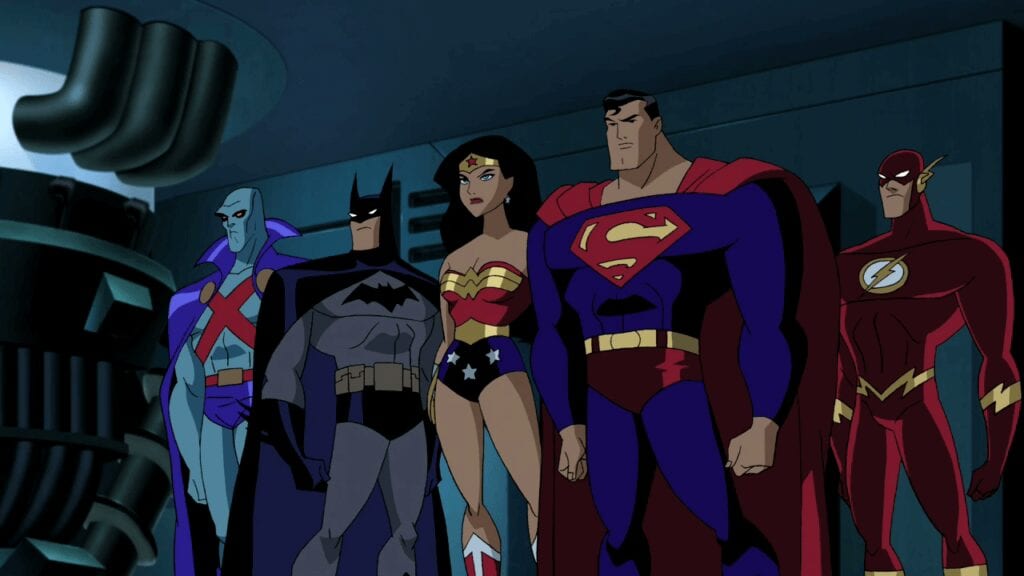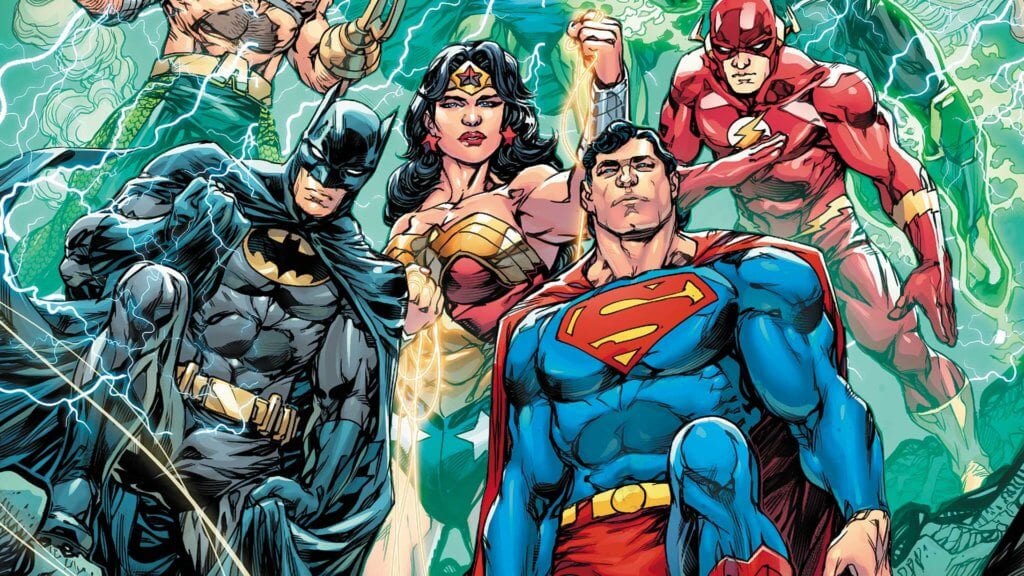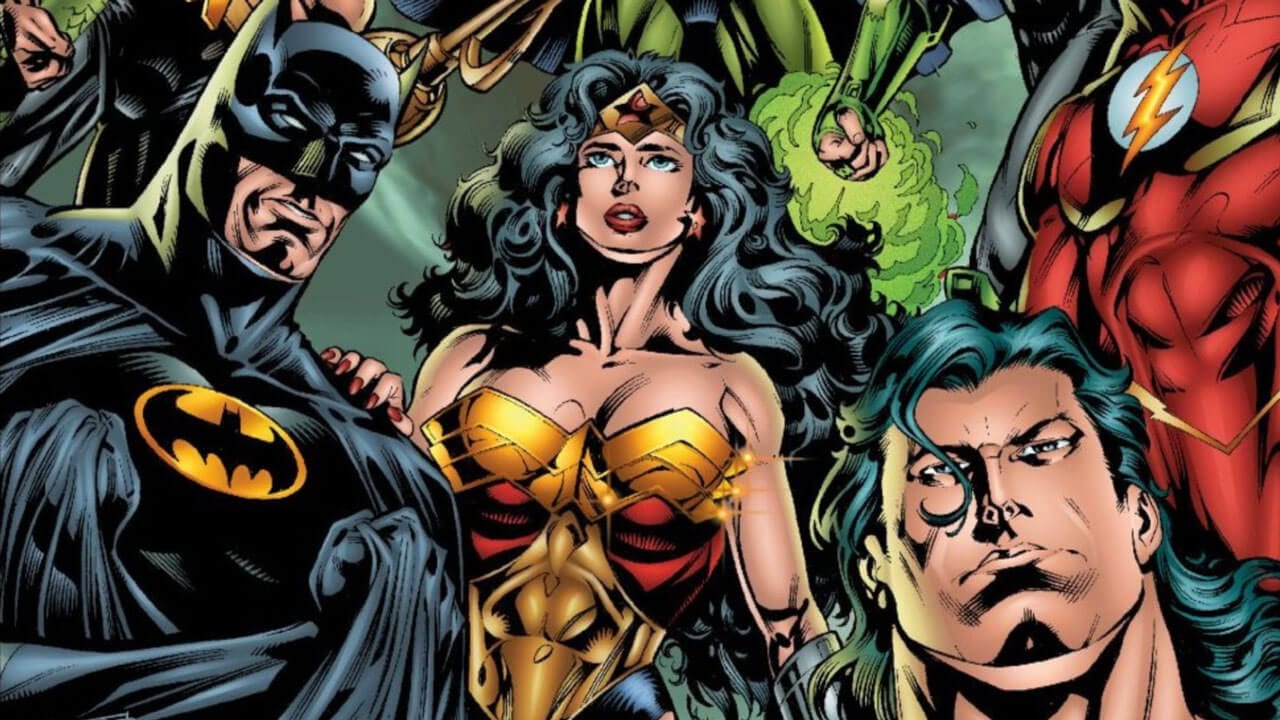When I saw Shazam!, there were a lot of things I was excited about, particularly the idea that D.J. Cotrona and Adam Brody were going to be featured as members of the Shazam! family. DC has a habit of giving nods to past productions in their various projects, with Christopher Reeve showing up on Smallville and Laura Vandervoort appearing on Supergirl. What set Cotrona and Brody’s appearance apart from others was the fact that their own DC project, Justice League: Mortal (in which they would have played Superman and the Flash, respectively), was never filmed. This movie, to have been directed by George Miller, would’ve been a first in many ways, from the scale and scope to even many of the actors who would have no doubt shot to stardom by playing the most popular characters in the DC pantheon. Fortunately, over the years we’ve had a bit of light shed on the film thanks to a variety of interviews and, of course, the script being released online, which has enabled us to delve further into what would’ve been the first cinematic superhero team-up of the modern era.
The Justice League: Mortal script opens with a funeral, and the reader is left to wonder just who is in the casket. It then cuts to two days prior, establishing Batman, who is monitoring the world’s superheroes via Brother Eye, and Detective J’onn J’onzz aka Martian Manhunter who is in Denver working a case. From there, the action moves to the restaurant Planet Krypton, where Barry Allen, aka the Flash, is eating with his wife as he watches Wonder Woman on TV. Having heard about a mysterious fire in Denver, he and Wonder Woman end up working together to help J’onzz, whose greatest fear has enveloped him via a mysterious seahorse. This puts the King of Atlantis, Arthur Curry, aka Aquaman (a name he initially hates), into our heroes’ orbit and, at first glance, makes him a suspect. While there’s a lot going on here, we never lose sight of the fact that Barry is the avatar for the audience as he fanboys over the Princess of Themyscira, as well as the rest of our heroes, who have not yet unified as a team.
Threaded through the Flash’s exploits with our heroes is Maxwell Lord, who is working with Talia al Ghul (who would have been played by Teresa Palmer, and is severely underutilized throughout) as they try to maximize the weaknesses of the Justice League (hence the title, Mortal) through the use of nanites, which Lord monitors using Batman’s Brother Eye. Batman is unaware of this until it is too late, as he faces Lord’s OMACs – humans turned into cyborgs – multiple times throughout the script and discovers that Talia has been manipulating him since they met. Justice League: Mortal culminates with the OMACs beginning their attacks and Lord controlling Superman’s mind, forcing him to attack his superhero cohorts. Of particular note is a battle with Wonder Woman which takes the two to the moon, only for Wonder Woman to send Superman hurtling back to Earth as John Stewart/Green Lantern shows up. During the final battle, Flash sacrifices himself to beat Lord, thus bringing clarity to the funeral seen in the beginning. The script ends with Superman and the rest of our heroes deciding to officially form the League before heading off into space to fight Starro, a poetic end considering the significance of the villain as the very first threat they faced in the comics.

There’s a lot to like about Justice League: Mortal, particularly the way the Flash is positioned as the lead. Reading this script, it makes one lament all the problems the Flash has had making it to the big screen, as it’s clear the Scarlett Speedster has amazing potential if done right (something TV show has pulled off with varying degrees of success). Additionally, both Batman and Maxwell Lord are characterized well here, and I really wish Armie Hammer and Jay Baruchel would’ve gotten the opportunity to inhabit these roles, particularly Baruchel, who is known more for comedies than big-budget blockbusters (The Sorcerer’s Apprentice – which also featured JLM costar, Palmer – notwithstanding). While many fans looked aghast at this casting choice, the notion of Baruchel playing a supervillain is incredibly intriguing to me. I’m a big believer in actors stretching themselves in new and exciting ways, and it doesn’t get much newer or more exciting than Jay Baruchel as Maxwell Lord.
That being said, there’s a lot about Justice League: Mortal that doesn’t work, particularly in the latter half of the script. The first instance of this is the use of OMACs and Talia. While at first glance their inclusion might seem like a good idea, at a certain point both feel like plot points – the former simply existing so that the League could have something to fight, the latter being there as a tool for both Lord and the plot. This is particularly disappointing for me, as I had been looking forward to her scenes with Lord after having enjoyed their portrayers in The Sorcerer’s Apprentice, so it was disappointing to see Talia receive such an underwritten part. The next moment that didn’t add up for me was the use of John Stewart. For a character with limitless possibilities, Hollywood never seems to be able to get any Green Lantern character right. It was as though the writers forgot to have him do something interesting beyond being affected by Lord’s machinations and removing nanites from Barry, giving him an action sequence that seemed to be too little, too late. Hopefully, Geoff Johns will do right by him in the upcoming Green Lantern Corps film, should the rumors of his inclusion prove true.

The script’s issues aside, with the auspices involved – particularly a visionary like George Miller directing – one can’t help but ask the big question: why is it that Justice League: Mortal never happened? As it turns out, it was something not even Maxwell Lord could’ve controlled: the evolving landscape of Hollywood. While the writers’ strike and tax breaks are often cited as the reasons, it seems to be a mixture of both, in addition to Warner Bros. getting cold feet over the very ambitious production. These days, no studio would blink at the idea of greenlighting a film like Justice League: Mortal, warts and all, with George Miller at the helm. Mad Max: Fury Road proved that Miller has what it takes to film great action, and only makes one wonder what he would’ve done with DC’s greatest heroes. Here’s hoping this script sees the light of day in some form down the road, be it as an animated feature or as a graphic novel.
Justice League: Mortal will always be remembered as a fun possibility. Despite a strange use of OMACs and very poor utilization of the Green Lantern mythos, this script was an intriguing prospect that will make fans and critics wonder if we lost a great superhero epic or dodged a huge Kryptonite bullet.







